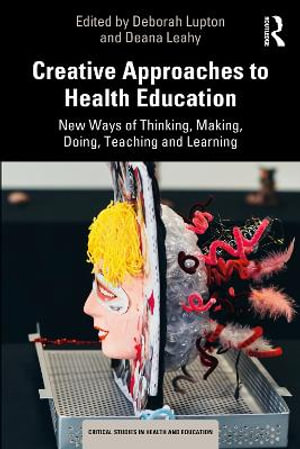Books
Lupton, D., Southerton, C., Clark, M. and Watson, A. (2021) The Face Mask in COVID Times: A Sociocultural Analysis. Berlin: De Gruyter.
Edited books and special issues
Lupton, D. and Willis, K. (eds) (2021) The COVID-19 Crisis: Social Perspectives. Abingdon: Routledge.
‘In and beyond the smart home’ special issue. Convergence (volume 27, issue 5), 2021.
Journal articles
Lupton, D. (2021) Young people’s use of digital health in the Global North: narrative review. Journal of Medical Internet Research, available online at https://www.jmir.org/2021/1/e18286/
Lupton, D. and Southerton, C. (2021) The thing-power of the Facebook assemblage: why do users stay on the platform? Journal of Sociology, 57(4), 969-985.
Lupton, D. (2021) ‘Not the real me’: social imaginaries of personal data profiling. Cultural Sociology, 15(1), 3-21.
Watson, A. and Lupton, D. (2021) Tactics, affects and agencies in digital privacy narratives: a story completion study. Online Information Review, 45(1), 138-156.
Watson, A., Lupton, D. and Michael, M. (2021) Enacting intimacy and sociality at a distance in the COVID-19 crisis: the sociomaterialities of home-based communication technologies. Media International Australia, 178(1), 136-150.
Lupton, D. (2021) ‘Things that matter’: poetic inquiry and more-than-human health literacy. Qualitative Research in Sport, Exercise and Health, 13(2), 267-282.
Lupton, D. (2021) ‘The internet both reassures and terrifies’: exploring the more-than-human worlds of health information using the story completion method. Medical Humanities, 47(1), 68-77.
Lupton, D. (2021) ‘Next generation PE?’ A sociomaterial approach to digitised health and physical education. Sport, Education and Society, online first doi.org/10.1080/13573322.2021.1890570
Lupton, D. (2021) ‘Sharing is caring’: Australian self-trackers’ concepts and practices of personal data sharing and privacy. Frontiers in Digital Health, 3(15). Available online at https://www.frontiersin.org/articles/10.3389/fdgth.2021.649275/full
Lupton, D. and Lewis, S. (2021) Learning about COVID-19: a qualitative interview study of Australians’ use of information sources. BMC Public Health, available online at https://doi.org/10.1186/s12889-021-10743-7
Lupton, D. (2021) ‘Honestly no, I’ve never looked at it’: teachers’ understandings and practices related to students’ personal data in digitised health and physical education. Learning, Media and Technology, 46(3), 281-293Hjorth, L. and Lupton, D. (2021) Digitised caring intimacies: more-than-human intergenerational care in Japan. International Journal of Cultural Studies, 24(4), 584-602.
Lupton, D. and Watson, A. (2021) Towards more-than-human digital data studies: developing research-creation methods. Qualitative Research, 21(4), 463-480.
Watson, A., Lupton, D. and Michael, M. (2021) The COVID digital home assemblage: transforming the home into a work space during the crisis. Convergence, 27(5), 1207-1221.
Downing, L., Marriott, H. and Lupton, D. (2021) ‘Ninja levels of focus’: therapeutic holding environments and the affective atmospheres of telepsychology during the COVID-19 pandemic. Emotion, Space & Society, 40. Available online at https://doi.org/10.1016/j.emospa.2021.100824
Lupton, D. and Lewis, S. (2021) ‘The day everything changed’: Australians’ COVID-19 risk narratives. Journal of Risk Research, online first, doi.org/10.1080/13669877.2021.1958045
Clark, M. and Lupton, D. (2021) Pandemic fitness assemblages: the sociomaterialities and affective dimensions of exercising at home during the COVID-19 crisis. Convergence, 27(5), 1222-1237.
The Lancet and Financial Times Commission on governing health futures 2030: growing up in a digital world. Kickbusch, I., Piselli, D., Agrawal, A., Balicer, R., Banner, O., Adelhardt, M., Capobianco, E., Fabian, C., Singh Gill, A., Lupton, D., Medhora, R. P., Ndili, N., Ryś, A., Sambuli, N., Settle, D., Swaminathan, S., Morales, J. V., Wolpert, M., Wyckoff, A. W., Xue, L., Bytyqi, A., Franz, C., Gray, W., Holly, L., Neumann, M., Panda, L., Smith, R. D., Georges Stevens, E. A., & Wong, B. L. H. (2021) The Lancet and Financial Times Commission on governing health futures 2030: growing up in a digital world. The Lancet. Available online at https://www.sciencedirect.com/science/article/pii/S0140673621018249
Lupton, D. (2021) ‘All at the tap of a button’: mapping the food app landscape. European Journal of Cultural Studies, 24(6), 1360-1381.
Petrie, K., Deady, M., Lupton, D., Crawford, J., Boydell, K. and Harvey. S. (2021) ‘The hardest job I’ve ever done’: a qualitative exploration of the factors affecting junior doctors’ mental health and wellbeing during medical training in Australia. BMC Health Services. Available online at https://bmchealthservres.biomedcentral.com/articles/10.1186/s12913-021-07381-5
Book chapters
Lupton, D. (2021) Self-tracking. In Kennerly, M., Frederick, S. and Abel, J.E. (eds), Information: Keywords. Columbia University Press, pp, 187-198.
Lupton, D. (2021) Afterword: future methods for digital food studies. In Leer, J. and Krogager, S.G.S. (eds), Research Methods in Digital Food Studies. Abingdon: Routledge, pp. 222-227.
Lupton, D. and Willis, K. (2021) COVID Society: introduction to the book. In Lupton, D. and Willis, K. (eds), The COVID-19 Crisis: Social Perspectives. Abingdon: Routledge, pp. 3-13.
Lupton, D. (2021) Contextualising COVID-19. In Lupton, D. and Willis, K. (eds), The COVID-19 Crisis: Social Perspectives. Abingdon: Routledge, pp. 14-24.
Other publications
Lupton, D., Pink, S. and Horst, H. (2021) Living in, with and beyond the ‘smart home’: introduction to the special issue. Convergence, 27(5), 1147-1154.
Watson, A., Clark, M., Southerton, C. and Lupton, D. (2021) Fieldwork at your fingertips: creative methods for social research under lockdown. Nature Career Column, 3 March 2021. Available at https://www.nature.com/articles/d41586-021-00566-2
Lupton, D., Pink, S. and Horst, H. (2021) Living in, with and beyond the ‘smart home’: introduction to the special issue. Convergence, 27(5), 1147-1154.
The More-than-Human Wellbeing Exhibition












